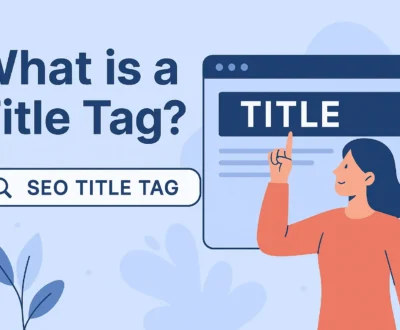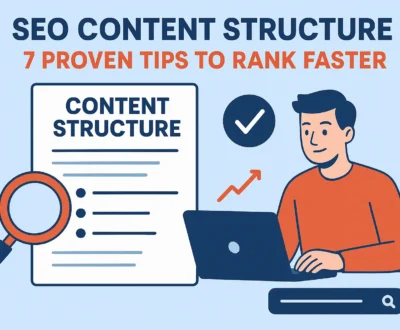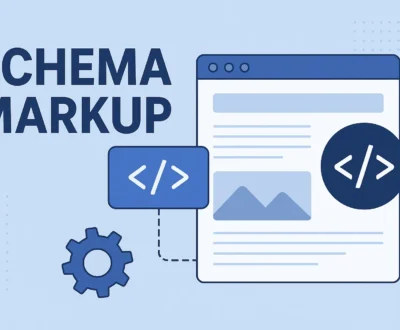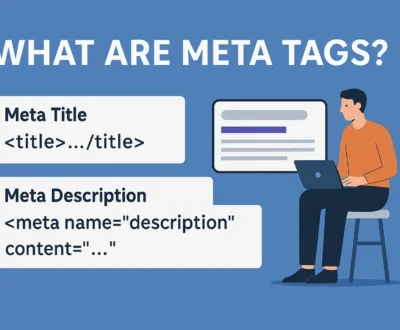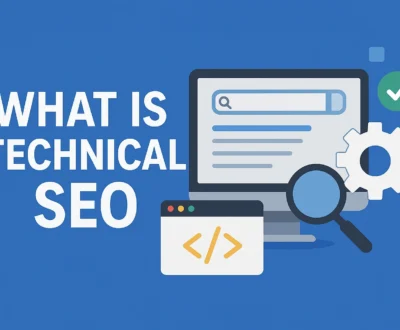What Is On-Page SEO?
- November 7, 2025
- Digital Marketing, On-Page SEO, Search Engine Optimization(SEO)
As we learned in our blog on what Search Engine Optimization is, on-page SEO is one of the most essential elements of search engine optimization for ranking higher on Google. It’s the process of optimizing individual web pages to improve visibility in search engines and attract the right audience. Unlike off-page SEO, which focuses on backlinks and external signals, SEO on-page optimization is about the elements you can control, such as your content, structure, and code.
A complete on-page SEO audit ensures that your website aligns with Google’s best practices for quality, relevance, and user experience. Whether you manage a blog, a service-based website, or an eCommerce store, mastering on-page optimization helps you stand out in a competitive search landscape.
What is On-Page Optimization?
At its core, on-page SEO typically consists of all the factors on your website that are visible to the naked eye. Meaning the elements that any viewer, anywhere on the internet, can see and interact with.
This includes your written content, headings, titles, images, links, and layout. Essentially, everything users experience when they land on your site. These visible elements are supported by technical and structural optimizations behind the scenes that ensure search engines can understand and rank your page correctly.
In short, on-page SEO is about optimizing what both humans and search engines can clearly interpret and value.
Understanding On-Page SEO
On-page SEO involves optimizing both the content and optimizing website’s URL to enhance the navigation and flow of the website.
Key factors in on-page optimization are:
- Page titles and meta descriptions
- Header tags (H1, H2, H3)
- Keyword placement and density
- Internal linking
- Image optimization
- Using Alt tags
- URL structure
The goal is simple: create a page that is easy for users to read and easy for search engines to understand.
When you follow on-page SEO best practices, your pages are more likely to rank for the right search terms and attract high-quality traffic that converts.
On Page Optimization: What Signals Do Crawlers Typically Look For?
Search engines like Google use automated bots, called crawlers, to analyze and understand webpages. These crawlers look for specific signals to determine how relevant and trustworthy a page is. Understanding these signals is a key part of on-page optimization and helps ensure your content performs well in search results.
Here are the main elements crawlers evaluate:
Content Relevance and Keyword Usage
Crawlers identify your page’s topic by scanning the text for keywords and related phrases. Placing your main keyword, such as on-page SEO, naturally within titles, headings, and body content helps crawlers understand context and intent.
HTML Structure and Tagging
Clean HTML with proper headings (H1 for main title, H2/H3 for sections) allows crawlers to read your page hierarchy clearly.
Meta Tags
Title tags and meta descriptions tell search engines what each page is about. Well-optimized SEO meta tags following on-page SEO best practices can improve visibility and click-through rates.
Internal and External Linking
Crawlers follow links to map your website structure. Internal links help distribute authority, while links to trusted external sites show credibility.
User Experience Signals
Search engines consider engagement metrics like time spent on page, bounce rate, and mobile usability. Pages that load fast and offer easy navigation tend to perform better.
Image Optimization
Crawlers can’t “see” images, so they rely on alt text and file names to understand visuals. Optimized images improve accessibility and SEO.
When your on-page SEO audit includes these factors, you make your site both crawler-friendly and user-friendly. It is a winning combination for long-term visibility.
Conducting an On-Page SEO Audit
A thorough on-page SEO audit helps you uncover missed opportunities and technical issues. You can use tools like Google Search Console, Screaming Frog, or Ahrefs to evaluate your pages.
Here’s what to check:
- Title and Meta Description: Ensure each page has unique, keyword-rich metadata.
- Keyword Placement: Include keywords naturally in the title, headings, and first paragraph.
- URL Structure: Use short, descriptive URLs with your target keyword (e.g., /on-page-seo-optimization).
- Content Quality: Ensure your content is original, relevant, and satisfies user intent.
- Internal Links: Connect related pages to help crawlers understand your site hierarchy.
- Mobile & Speed Performance: Test your site’s responsiveness and loading speed regularly.
Performing an on-page SEO audit monthly or quarterly helps you keep your site optimized for search algorithm updates.
SEO on-page optimization isn’t just about keywords; it’s about improving the entire user experience. Search engines reward pages that efficiently meet user needs.
As a creator, you must also focus on:
- Valuable content that answers user questions
- Mobile-friendly layouts that engage visitors
- Fast load times to reduce bounce rates
- Clear structure with easy navigation and internal linking
- EEAT guideline as given by Google
By perfecting on-page optimization, you strengthen your foundation for both user trust and search performance.
On-Page SEO Best Practices
Following on-page SEO best practices ensures every page reaches its full ranking potential.
Here’s a quick checklist:
- Use one primary keyword per page
- Optimize headings (H1, H2, H3) for readability
- Optimize images (webp format is typically preferable)
- Add alt text to all images
- Write clean, concise meta tags
- Update content regularly
- Clean URL structure
By consistently applying these on-page SEO best practices, you create a site that both users and search engines love.
On-page SEO forms the foundation of any successful digital strategy. It ensures your website is understandable, relevant, and optimized for both people and search engines. Whether you’re performing an in-depth on-page SEO audit or refining SEO on-page optimization across your site, every small improvement counts.
Remember: on-page optimization is an ongoing process. By focusing on visible elements users engage with and signals crawlers look for, you can strengthen your website’s authority, attract better traffic, and secure lasting results. To rank your website higher, get started with The Golden Ink Media's seo services. Contact us now to begin!
Priyanka is a long form content writer with experience of over 5 years. She has worked in multiple industries including real estate, ecommerce services and products, hospitality, business formation, and more. In her free time, she loves to read books, click photographs, and listen to podcasts.
About us and this blog
We are a digital marketing company with a focus on helping our customers achieve great results across several key areas.
Request a free quote
We offer professional SEO services that help websites increase their organic search score drastically in order to compete for the highest rankings even when it comes to highly competitive keywords.
Subscribe to our newsletter!
More from our blog
See all postsRecent Posts
- What is a Title Tag? A Complete Guide for Beginners December 7, 2025
- SEO Content Structure: Tips to Rank Faster November 30, 2025
- What is the Alt Text in SEO? November 26, 2025


